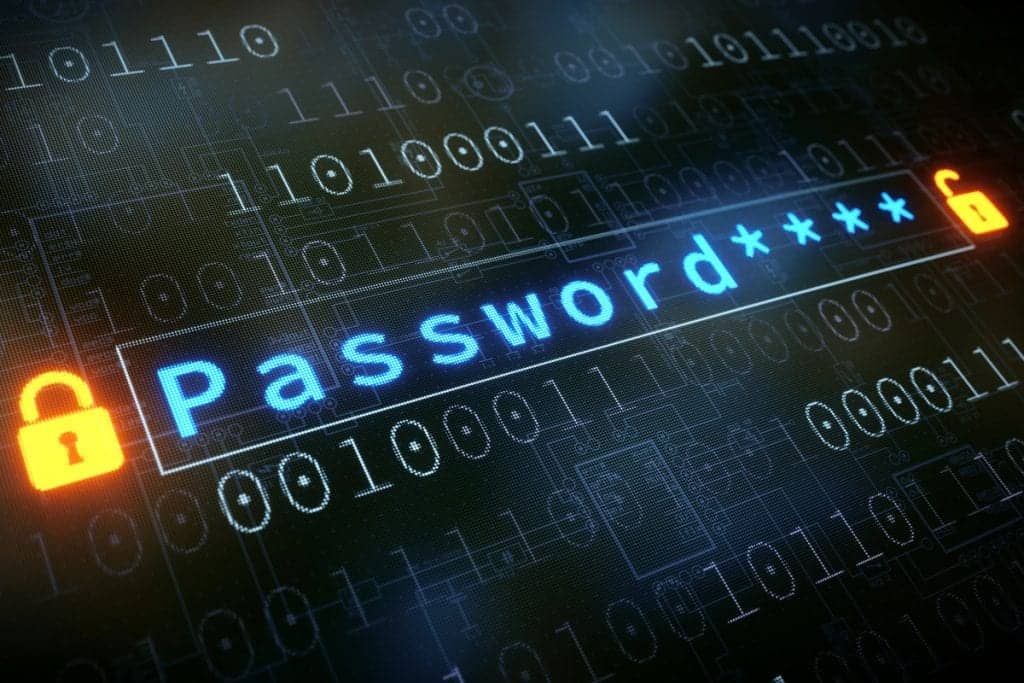The main difference between hashing and encryption is that encryption scrambles data temporarily so it can be decoded later with the right key, while hashing creates a permanent digital fingerprint to verify data hasn’t been tampered with. Both methods protect sensitive data, but they serve completely different purposes for your business security needs.
Knowing these data protection methods isn’t just about technical knowledge; it’s about safeguarding your business from devastating cyber attacks. Without proper data security, your company faces potential breaches that could expose customer information, halt operations, and damage your reputation permanently.
The consequences can be severe: regulatory fines, lost customers, and business closure.
At CMIT Solutions, we’ve helped thousands of businesses implement the right combination of hashing and encryption to protect their valuable data. Our 25+ years of cybersecurity expertise and recognition on Entrepreneur Magazine’s Franchise 500 list ensure your business stays secure while maintaining smooth operations.
Protect your business data with our comprehensive cybersecurity services designed specifically for small and medium businesses.
What Are Hashing and Encryption? (Definitions)
Both hashing and encryption serve as digital security guards for your business data, but they work in fundamentally different ways. Think of encryption as a high-tech safe that locks your valuables away but gives you the combination to open it later.
Hashing, on the other hand, works like a tamper-evident seal that shows if someone has interfered with your package, but the seal can’t be removed and reapplied.
What Is Encryption?
Encryption is the process of converting readable data into scrambled code that can only be decoded by someone with the correct encryption keys. Imagine you’re sending confidential financial reports between your main office and a branch location.
Encryption transforms that sensitive information into unreadable text during transmission, protecting it from hackers who might intercept the message.
The beauty of encryption lies in its reversibility. When your branch office receives the encrypted file, it uses its private key to decrypt the data back into its original, readable format. This process ensures that even if cybercriminals intercept your data sent over the internet, they can’t decipher the content without the proper decryption key.
Common encryption methods like Advanced Encryption Standard (AES) provide robust protection for businesses handling sensitive data daily.
Consider a scenario where your accounting team needs to send payroll information to your bank. Encryption protects this sensitive data during transmission, ensuring employee personal information remains secure even if the network is compromised.
What Is Hashing?
Hashing transforms data into a unique, fixed-length string of characters called a hash value that cannot be reversed back to the original information. Unlike encryption, hashing creates a permanent digital fingerprint that verifies data integrity rather than hiding content for later retrieval.
When your employees log into your business systems, their usernames and passwords are processed through a hash function. Instead of storing actual passwords, your system stores only the hashed data.
This means if a hacker gains access to your user data storage, they can’t simply read the passwords because the original information can’t be extracted from the hash value. Popular secure hash algorithms like SHA (Secure Hash Algorithm) create these digital fingerprints to ensure your login credentials remain protected.
The primary purpose of hashing is verification and integrity checking. Your computer system can compare the hash of a current password attempt with the stored hashed data to confirm user identity without ever revealing the actual password.
This method provides excellent protection against unauthorized access while maintaining efficient user authentication processes.
⚠️ Even with hashing protection, using weak passwords makes your business vulnerable to brute force attacks, where hackers use software to try millions of password combinations.
Additional reading: what is smishing in cyber security
What Is the Difference Between Hashing and Encryption?
Knowing when to use hashing versus encryption depends on whether you need to retrieve the original data later or simply verify its authenticity. Each method serves distinct security purposes that complement your overall cybersecurity strategy.
| Feature | Hashing | Encryption |
|---|---|---|
| Purpose | Data verification and integrity | Data confidentiality and protection |
| Reversibility | Irreversible (one-way) | Reversible (two-way) |
| Key Required | No key needed | Encryption and decryption keys are required |
| Output | Fixed-length hash value | Variable-length encrypted data |
| Common Use | Password storage, file verification | Secure data transmission, storage |
| Speed | Very fast processing | Slower due to key management |
Purpose and Primary Function
Hashing serves as a digital authentication method that verifies data hasn’t been altered or corrupted. Your business systems use hash functions to check file integrity, authenticate users, and detect unauthorized changes to important documents.
When you upload a software update or receive a digital contract, hashing confirms the content matches the original without revealing sensitive information.
Encryption focuses on keeping data confidential during storage or transmission. Companies use encryption to protect customer credit card numbers, employee records, and proprietary business information from unauthorized access.
This method ensures that even if cybercriminals intercept your data, they can’t read the content without the proper decryption tools.
Reversibility: Can You Get Your Data Back?
Hashing creates permanent digital fingerprints that cannot be reversed to reveal the original input. Once data goes through a hashing algorithm, you can never recover the original information from the hash value.
This irreversible nature makes hashing perfect for password protection because stored hashes can’t be decoded even if hackers access your database.
Encryption allows you to recover the original data using the appropriate decryption key. When your team encrypts a business proposal before sending it to a client, the recipient can decrypt the file to read the original content.
This reversible process makes encryption essential for secure communication and data storage, where you need access to the original information later.
Additional reading: what is cyber security
Security Levels and Vulnerabilities
Hashing security considerations include:
- Hash collisions, where different inputs produce identical hash values, can create security vulnerabilities
- Rainbow table attacks use precomputed hash databases to reverse common passwords
- Older algorithms like MD5 have known weaknesses that make them unsuitable for modern security needs
Encryption faces these security challenges:
- Key management requires secure storage and distribution of encryption keys to authorized users
- Quantum computing advances threaten to break current encryption standards in the future
- Weak implementation or poor key selection can compromise even the strongest encryption algorithms
The National Institute of Standards and Technology provides cybersecurity frameworks that help businesses choose appropriate hashing and encryption standards for their specific industry requirements.
Common Business Use Cases
Hashing applications for your business include:
- Storing employee login credentials securely in your user database
- Verifying software downloads haven’t been corrupted or modified by malicious actors
- Creating digital signatures for contracts and legal documents to prove authenticity
- Monitoring file changes in critical business systems to detect unauthorized access
Encryption serves these business functions:
- Protecting customer payment information during online transactions and data processing
- Securing email communications containing confidential business negotiations or sensitive employee information
- Safeguarding backup files stored in cloud services or off-site locations
- Ensuring compliance with industry regulations that require specific data protection standards
A healthcare practice might use hashing to secure patient login systems while using encryption to protect medical records during transmission to insurance companies.
Your business security depends on more than passwords. Contact us now to implement advanced hashing and encryption strategies that safeguard your operations.
Encryption vs Hashing: Which Should Your Business Use?
⚖️ Consider implementing both methods: use hashing for user authentication and encryption for protecting sensitive business documents during storage and transmission.
Most businesses need both encryption and hashing as part of a comprehensive cybersecurity strategy rather than choosing one method over the other. The decision depends on what you’re trying to protect and whether you need to access the original data later.
Use hashing when you need to verify authenticity without revealing content, such as password storage, file integrity checking, and digital signatures. This method works perfectly for login systems where you only need to confirm user identity rather than access their actual password.
Hashing also provides excellent protection for sensitive data that never needs to be retrieved in its original form.
Choose encryption when you need to hide data temporarily while maintaining the ability to decode it later. Email communications, file transfers, customer databases, and backup storage all benefit from encryption because authorized users must access the original content.
Your business likely transmits confidential information daily that requires this reversible protection method.
Data breaches and poor security implementations can lead to costly business downtime that devastates small and medium-sized companies. When cybercriminals successfully attack unprotected systems, the resulting operational disruptions often exceed the value of the initial security investment.
Calculate the true cost of IT downtime for your business with our free IT Downtime Calculator. Knowing these costs helps prioritize your cybersecurity investments.
Common Hashing and Encryption Algorithms for Businesses
Modern businesses rely on proven algorithms that balance security strength with practical implementation requirements. Knowing these standard methods helps you make informed decisions about protecting your company’s valuable data assets.
The most widely used algorithms have undergone extensive testing by cybersecurity experts and government agencies to ensure they provide adequate protection against current threat levels. However, algorithm selection should always align with your specific business needs, compliance requirements, and technical capabilities.
Popular Encryption Methods
Business-grade encryption typically uses these proven algorithms:
- Advanced Encryption Standard (AES): Government-approved symmetric encryption that uses the same key for both encryption and decryption processes, making it efficient for protecting large amounts of business data
- RSA encryption: Asymmetric method using separate public and private keys, ideal for secure email communications and digital certificates where key distribution is challenging
- Twofish cipher: Fast symmetric encryption designed for network applications that require frequently changing keys to maintain security
- Triple DES (3DES): Legacy standard still used in financial institutions, though newer implementations should migrate to AES for better protection
Standard Hashing Algorithms
Reliable hashing functions for business applications include:
- SHA-256: Current industry standard that produces 256-bit hash values, widely used for password protection and digital signatures in business systems
- SHA-3: Newest secure hash algorithm offering enhanced resistance against advanced cryptographic attacks targeting older SHA versions
- bcrypt: Password-specific hashing function designed to be computationally expensive, slowing down hacker attempts to crack stored passwords
- MD5: Older algorithm still found in legacy systems, but no longer recommended for new security implementations due to known vulnerabilities
| Algorithm | Type | Security Level | Best Business Use |
|---|---|---|---|
| AES-256 | Encryption | Very High | File storage, email protection |
| RSA-2048 | Encryption | High | Secure communications, certificates |
| SHA-256 | Hashing | Very High | Password storage, file verification |
| bcrypt | Hashing | High | User authentication systems |
With threats evolving daily, proactive security isn’t optional; it’s essential.
Don’t leave your business exposed to cyber threats. Contact us today for proven data protection with enterprise-grade hashing and encryption.
Real-World Business Scenarios: When to Use Each Method
Different industries face unique data protection challenges that require tailored approaches to hashing and encryption implementation. Knowing how similar businesses protect their information helps you develop an effective security strategy.
A manufacturing company might encrypt design files sent to suppliers while using hashing to verify that software updates for production equipment haven’t been tampered with by malicious actors.
Healthcare practices must protect patient records during transmission to insurance companies using strong encryption protocols. Simultaneously, they implement hashing for staff login systems to comply with HIPAA requirements while preventing unauthorized access to sensitive medical data.
This dual approach ensures both privacy protection and regulatory compliance.
Financial services companies encrypt customer transaction data throughout processing while using hashing to verify the integrity of daily backup files. When clients access online banking systems, their passwords are hashed and compared against stored values without revealing actual credentials to system administrators.
Professional services firms like law offices and accounting practices encrypt confidential client communications and store important documents using advanced encryption methods. They use hashing to verify contract authenticity and detect any unauthorized modifications to legal documents that could compromise client interests.
Retail businesses encrypt customer credit card information during payment processing while implementing hashing for employee access controls. This combination protects customer financial data during transactions while securing internal systems from unauthorized staff access.
⚠️ Companies that fail to implement appropriate data protection methods face significant financial and operational consequences that can threaten business continuity.
Compliance Requirements: What Your Business Needs to Know
Various industries must follow specific regulations that dictate how businesses implement hashing and encryption for sensitive data protection. Knowing these requirements helps avoid costly fines while maintaining customer trust and business operations.
Key compliance frameworks affecting your data protection strategy include:
- HIPAA (Healthcare): Requires encryption for patient health information in transit and at rest, with hashing acceptable for certain authentication purposes
- PCI DSS (Payment Processing): Mandates strong encryption for credit card data storage and transmission, plus secure hashing for authentication systems
- SOX (Financial Reporting): Demands encryption for financial data and audit trails, with hashing required for document integrity verification
- GDPR (European Operations): Requires encryption as a technical safeguard for personal data, with hashing considered pseudonymization under certain conditions
| Industry | Primary Regulation | Encryption Required | Hashing Applications |
|---|---|---|---|
| Healthcare | HIPAA | Patient data transmission | User authentication |
| Finance | SOX, PCI DSS | Transaction processing | Audit trail integrity |
| Defense Contractors | CMMC | Controlled unclassified information | System access control |
| Retail | PCI DSS | Payment card data | Employee login systems |
For businesses working with the Department of Defense, knowing encryption and hashing is critical for CMMC compliance.
CMIT Solutions specializes in helping companies achieve and maintain CMMC compliance, ensuring your data protection methods meet strict federal requirements while supporting your business operations.
Success Story: How We Helped Optyx Secure Multi-Location Operations
Optyx, a growing multi-location business, faced significant challenges securing sensitive data across its distributed operations while maintaining efficient workflows between offices. They needed a comprehensive approach that protected customer information and internal communications without hampering daily productivity.
See how CMIT Solutions helped Optyx, a multi-location business, implement comprehensive cybersecurity measures, including proper encryption and hashing protocols. This video case study demonstrates our proven approach to securing business data across multiple offices while maintaining operational efficiency.
Our team implemented a tailored security strategy combining encryption for inter-office communications and file transfers with robust hashing systems for employee authentication across all locations. This approach ensured sensitive customer data remained protected while enabling seamless collaboration between team members at different sites.
Read the complete Optyx success story to learn about the specific challenges they faced and how our comprehensive cybersecurity solutions addressed each concern while improving their overall operational efficiency.
The results speak for themselves: enhanced data security, improved compliance posture, and streamlined operations that support business growth rather than hindering it through complex security protocols.
📌 The Cybersecurity and Infrastructure Security Agency provides industry-specific guidance for implementing appropriate data protection measures based on your business sector and risk profile.
How CMIT Solutions Protects Your Business Data
Our comprehensive approach to data protection combines industry-leading encryption and hashing technologies with personalized service that addresses your specific business needs.
With over 25 years of cybersecurity experience, ConnectWise Partner of the Year recognition, and a network of 900+ IT experts, we understand how to implement security measures that protect without disrupting your operations.
We start every engagement with a thorough assessment of your current data protection practices, identifying vulnerabilities and recommending solutions that align with your industry requirements and budget constraints.
Our locally owned and operated approach means you get personalized attention backed by enterprise-level resources, with 24/7 monitoring ensuring your systems stay secure around the clock.
✔️ Our certified security professionals stay current with the latest threat intelligence and compliance requirements, ensuring your business maintains protection against evolving cybersecurity risks.
Unlike one-size-fits-all approaches, we customize our security recommendations based on your specific industry, company size, and operational requirements.
Whether you need HIPAA compliance for healthcare data or PCI DSS adherence for payment processing, our experts ensure your hashing and encryption implementations meet all necessary standards while supporting your daily business operations.
Secure your business data with CMIT Solutions’ proven cybersecurity expertise – call (800) 399-2648 today for a personalized security consultation.
FAQs
Is Hashing a Form of Encryption?
No, hashing is not a form of encryption despite both methods transforming data for security purposes. Hashing creates irreversible digital fingerprints for verification, while encryption temporarily scrambles data that can be decoded later with proper keys.
How Long Does It Take to Implement Encryption and Hashing Systems?
Implementation typically takes 2-6 weeks, depending on your business size and current infrastructure, with most systems operational within the first week. Our phased approach ensures minimal disruption to daily operations while establishing comprehensive protection for your sensitive data.
Can Small Businesses Afford Enterprise-Level Data Protection?
Yes, modern cybersecurity solutions scale to fit small business budgets while providing enterprise-grade protection through cloud-based services and managed security offerings. Many businesses discover that preventive measures cost significantly less than recovering from a single data breach incident.
What Training Do Employees Need for New Security Systems?
Most employees require only 1-2 hours of basic training to understand new security protocols, with ongoing support available as needed. We provide comprehensive training materials and support to ensure your team can effectively use new security measures without impacting productivity.
How Often Should We Update Our Encryption and Hashing Methods?
Security methods should be reviewed annually and updated when new vulnerabilities are discovered or compliance requirements change. We monitor your systems continuously and proactively recommend updates to maintain optimal protection against emerging threats.






